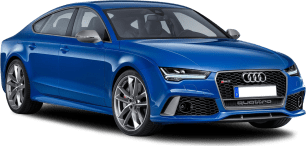There’s something teutonically symmetrical about the way the M8 Competition Gran Coupe delivers its prodigious thrust.
Peak torque of no less than 750Nm is available from just 1800rpm, remaining on full song across a broad plateau all the way to 5800rpm. Just 200revs later (6000rpm) peak power of 460kW (625hp!) takes over to finish the job, with the rev ceiling sitting just over 7000rpm.
That’s enough to slingshot this 1885kg bruiser from 0-100km/h in 3.2 seconds, which is supercar fast. And the engine and exhaust noise produced by the 4.4-litre twin-turbo V8 during such rapid acceleration is suitably brutal, courtesy of electronically-controlled flaps in the system opening up.
On a more civilised drive you can reduce the exhaust noise via an ‘M Sound Control’ button on the centre console.
The eight-speed auto is fast and positive, especially in manual mode, which dials up the fun via wheel-mounted paddles. And when it’s time to direct this car’s forward momentum into lateral movement BMW has brought in the engineering heavy artillery.
Despite its frameless door body structure the M8 Competition Gran Coupe feels solid as a rock thanks in no small part to its ‘Carbon Core’ construction, using four primary components - carbon-fibre-reinforced plastic (CFRP), aluminum, high-strength steel, and magnesium.
Then the ‘Adaptive M Suspension Professional’ (with active anti-roll stabilisation), the tricky xDrive continuously variable AWD system, and active M Sport diff combine to keep everything under control.
Suspension is a double wishbone front, five-link rear arrangement, with all key components in alloy to minimise unsprung weight. In concert with the electronic wizardry on-board, it helps keep the M8 buttoned down with only modest body roll in enthusiastic cornering, as the rear-biased AWD system seamlessly distributes drive to the axle and wheels that can make best use of it.
The price you’ll pay for the track-ready tune is in compromised ride comfort. Even in the ‘Comfort’ setting, the M8 Competition is firm, and feels corrugations and imperfections to a surprising degree.
An alignment of the BMW 8 Series planets left me with the keys to this car and the M850i Gran Coupe (also using the Carbon Core body) at the same time, and the difference between their softest settings is appreciable.
Also be aware that at 12.2m the M8 Gran Coupe’s turning circle is substantial, and it’s just as well all that camera, sensor and self-parking tech is available to help you guide this ship into port.
The M8’s electrically-assisted, variable-ratio steering features an ‘M’ specific calibration to deliver satisfying precision and good road feel. But in similar fashion to the ride a noticeable amount of unwelcome feedback comes through to the wheel.
The fat Pirelli P Zero rubber (275/35 fr / 285/35 rr) grips hard, and the monster brakes (ventilated all around, with 395mm rotors and six-piston calipers up front) wash off speed without fuss or fade.
But overall, you’ll have to live with a less refined drive when you sign on for the M8 Competition. Straight away it feels faster but lacks the M850i’s lighter touch. No matter which drive or suspension mode you select, responses are more aggressive and physical.
To fully explore and enjoy the M8 Competition’s abilities it feels like the race circuit is its most appropriate habitat. On the open road, the M850i is all the Gran Coupe you’re going to need.

